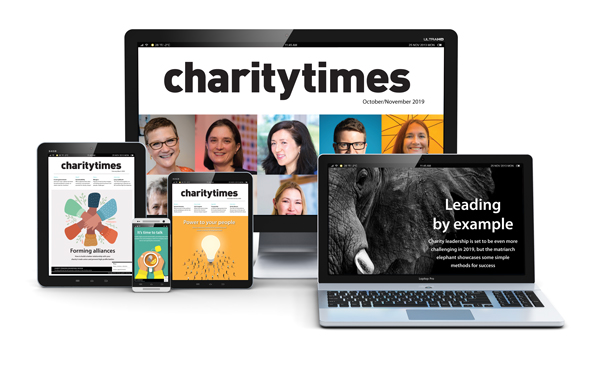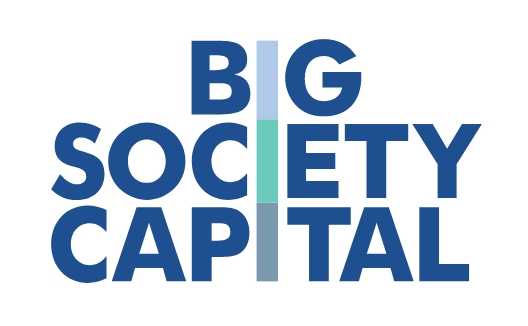Guide Dogs' chief digital officer Marie Orpen discusses how the charity adapted technology for their own use, and how others can do the same to move their digital offering forward.
----------------------------------------------------------------------------------------------------
Recently, Guide Dogs was delighted and proud to win the Charity Times 'Best Use of Technology' award for our AI bot and Alexa skill.
As an organisation with a 90-year history, it was recognition that we are focused firmly on the future and it shows our determination to remain relevant to the lives of people with sight loss in the 21st century.
The project was conceived alongside people with sight loss. Our extensive research within the VI community told us that getting information and finding the right support and advice was a massive issue. We were told of a ‘cliff edge’ following diagnosis, where the information and support available was complex, patchy and varied depending on where you live.
There might be a perception that people with sight loss don’t tend to adopt technology, but our research found that this isn’t the case. Many were early adopters of voice technology and in fact among over 75s, people with sight loss adopt smart technology ahead of their sighted peers.
We saw an opportunity to take advantage of technology that was already widely in use. Anecdotal evidence suggested that smart speakers in particular could be game-changing, because we knew that many people with sight loss already had these devices in their homes. We knew voice assistants could be a key channel to help us reach a larger number of people.
We secured funding from People’s Postcode Lottery to develop the AI bot and Alexa skill, but it had to be easy to use and the content had to be accessible. There was a wealth of knowledge within our organisation but not necessarily the content, so it was vital we brought people with sight loss into the project to ensure what we were developing was meeting people’s needs.
Guide Dogs had never previously used artificial intelligence, and so we had to test and learn and prove the technology. We also needed to identify some established content that would be useful as Alexa and web content, so we chose the Guide Dog Owner's manual.
Now, by using their voice, users can ask Alexa a range of questions based on the new conversations and broader advice topics we’ve developed. This could be anything from how to apply for our services or how to better care for their guide dog, to independent living skills and making the most of your remaining sight, which will launch in the coming months.
In my view, this channel could eventually overtake the web as a means of people acquiring information from and about Guide Dogs. The next stage is using it to create a seamless customer journey, where someone could start by asking Alexa a question, get information and then be automatically connected to our call centre to talk to a trained advisor. We’ve successfully tested a transfer from Alexa to phone and we are working on a proof of concept linking Alexa to Anywhere 365 (our Call Centre software) so watch this space!
Developing a single knowledge-base that can drive conversations across a number of channels gives us limitless scalability. Unlike most knowledge-bases that just serve an answer to a question, then await further input, we have created a highly structured topic architecture, allowing any answer to have follow-on options so that users can explore and discover further content.
I’m really impressed by digital-first charities such as RNID and Macmillan. Their digital services, integrated customer experiences and digital innovation are truly impressive. It’s great to see outstanding digital leaders helping to transform the sector.
The Covid pandemic has been a massive test for many charities and their beneficiaries. At Guide Dogs we were hit hard by restrictions on our traditional services delivered face to face. But the pandemic also taught us a lot about new ways we can do things and what people really want and need from us. We were able to adapt how we support people with sight loss, moving information and advice online wherever possible and making more than 40,000 keeping in touch calls. So while we weren’t able to deliver services in the usual way, we were still able to be there for the people we support. We’ve taken a lot of these learnings forward and I’m sure other charities have too.
Technology is absolutely at the forefront of what we do now at Guide Dogs, and data is building block of everything. This is why we are also currently undertaking a project to consolidate our data, because it will underpin all the work we need to do to support more people through technology.
The AI bot and Alexa skill are significant for us because they show our service development is now digital first. As an organisation which has been around for 90 years, we’re known for delivering services face to face. But thanks to this project we are seeing a greater understanding within Guide Dogs that digital first doesn’t mean digital only.
In our 90th year, we’re looking back at how far we’ve come and marking the first four guide dog partnerships in 1931, which were also incredibly innovative and pioneering at the time. We’re thanking our amazing volunteers and supporters and we’re asking people to join us in celebrating 90 years of life-changing services by taking on a 90 themed fundraiser during our anniversary month of October. But it’s also the perfect time to look forward and show that if you are someone with sight loss, Guide Dogs can help you meet the challenges of the modern world.
I’m proud of all the ways in which Guide Dogs supports people with sight loss, but I’m particularly proud that we are now putting the person who needs our support firmly at the centre, where they can reach us in a number of joined up ways, according to their own needs and preferences.
Charity Times video Q&A: In conversation with Hilda Hayo, CEO of Dementia UK
Charity Times editor, Lauren Weymouth, is joined by Dementia UK CEO, Hilda Hayo to discuss why the charity receives such high workplace satisfaction results, what a positive working culture looks like and the importance of lived experience among staff. The pair talk about challenges facing the charity, the impact felt by the pandemic and how it's striving to overcome obstacles and continue to be a highly impactful organisation for anybody affected by dementia.
Charity Times Awards 2023
Mitigating risk and reducing claims

The cost-of-living crisis is impacting charities in a number of ways, including the risks they take. Endsleigh Insurance’s* senior risk management consultant Scott Crichton joins Charity Times to discuss the ramifications of prioritising certain types of risk over others, the financial implications risk can have if not managed properly, and tips for charities to help manage those risks.
* Coming soon… Howden, the new name for Endsleigh.
* Coming soon… Howden, the new name for Endsleigh.
Better Society

© 2021 Perspective Publishing Privacy & Cookies











Recent Stories